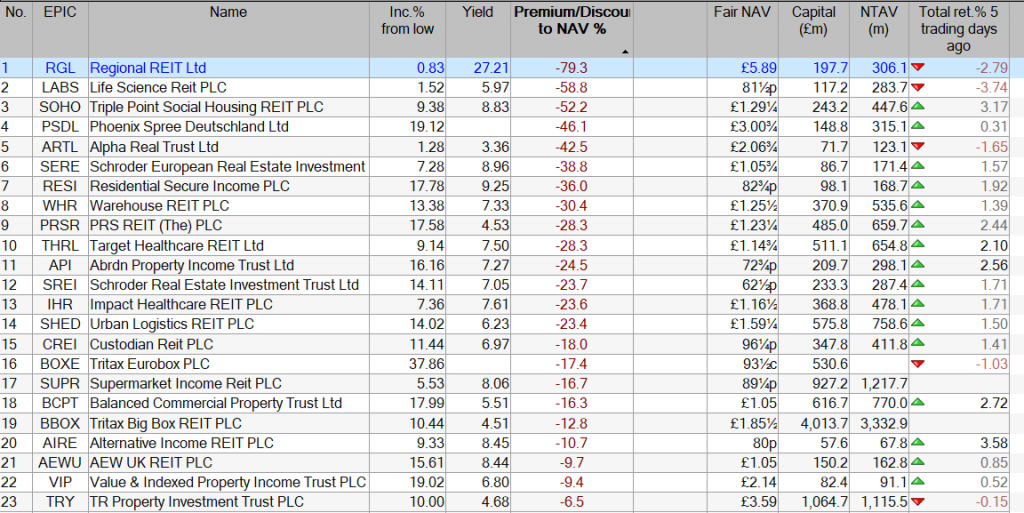
DYOR as some stats are not updated in a timely fashion.
Investment Trust Dividends

DYOR as some stats are not updated in a timely fashion.

Story by Royston Wild
Historically, investing in property’s been a great way to make a strong and sustainable second income. Buy-to-let was particularly popular with those looking to invest their savings.
But conditions have become a lot tougher for private landlords over the past decade. So I’d forget buy-to-let. Here, I’ll reveal what I think’s a much better way to make money from the UK property market.
But before I do, let’s quickly look at why buy-to-let’s become increasingly unattractive with Britons.
The Tenant Fees Act in 2019 brought in measures like transferring certain costs from tenants to landlords, and capping deposits. The restriction of mortgage interest relief and higher stamp duty on second properties has also had an impact.
Property owners have faced higher mortgage costs since the Bank of England began hiking interest rates.
The effect of all of this has been big. According to price comparison website Finder, the average landlord in April made £4,000 less a year in profit than in 2020, despite monthly rents shooting steadily higher.
It’s still possible to make money as a landlord, but I’d rather find other ways to make money with bricks and mortar.
Fortunately, UK share investors have what I consider to be an excellent alternative to buy-to-let. Real estate investment trusts (REITs) are companies that invest in a pool of properties in one or across multiple sectors.
We’re talking about hospitals, shopping centres, offices, factories and hotels, for instance. This gives investors a lot of choice, and allows them to spread risk across a wide variety of properties.
Investors also don’t have to pay large upfront sums to get involved with REITs. And under sector rules, these companies must pay at least 90% of annual rental profits out in the form of dividends.
But on balance, I think investment trusts would be a better choice for me.
Please note that tax treatment depends on the individual circumstances of each client and may be subject to change in future. The content in this article is provided for information purposes only. It is not intended to be, neither does it constitute, any form of tax advice.

RGL stats are unreliable as they haven’t caught up with the consolidation of the shares.


by Royston Wild
These 2 top-notch value stocks have fallen by over 10% this year. Provided by The Motley Fool
I’ve been searching for the best dividend stocks to buy for my own portfolio. And I’ve come across the following two dividend heroes from the UK’s second-most-prestigious share index.
Here’s why I’ll carefully consider adding them to my Stocks and Shares ISA when I next have cash spare to invest.
Greencoat UK Wind (LSE:UKW) offers one of the biggest forward dividend yields on the FTSE 250 today. In fact, at 7%, its yield is twice the size of the broader index average.
Electricity generators like this can be perfect picks for a stable income over time. The power they generate remains in high demand regardless of whatever economic, political or social crises come along. So they enjoy reliable cash flows that they can then dish out to their shareholders.
These business aren’t completely without risk however. One concern to me is that the cost of building wind farms is rising sharply. In recent months, Denmark’s Ørsted has either delayed or scrapped three major projects in the US due to spiralling expenses.
That said, the long-term upside of investing in renewable energy stocks like Greencoat UK Wind remains considerable. With the climate emergency accelerating, steps to boost clean energy capacity is heading in the same direction.
This particular stock — which owns 49 assets the length and breadth of Britain — should receive a boost from the greener policies of the new UK government. Labour has vowed to revamp planning rules to make it easier to build onshore wind farms.
With the business also trading at a discount to the value of its assets, I think now could be a great time to invest. Its price-to-book (P/B) ratio stands inside value territory of below 1, at 0.9.

Created with TradingView
With a dividend yield of 7.9%, Assura‘s (LSE:AGR) another share that brokers expect to deliver market-beating income this year. Like Greencoat, it enjoys dependable income streams that translate into a sustainable dividend.
This particular business owns and lets out primary healthcare properties like GP surgeries across the UK and Ireland. This is a highly defensive part of the real estate market. And what’s more, the rents it receives are essentially guaranteed by local authorities, meaning it doesn’t have to worry about missed payments.
I also like Assura because of its more recent move into the private hospital sector. Its purchase of 14 properties from Northwest Healthcare Properties for £500m will allow it to capitalise on booming demand for private healthcare in Britain.

Created with TradingView
Assura has a great record of steady dividend growth, as shown in the chart above. Earnings may suffer if the Bank of England fails to significantly slash interest rates. But, on balance, I think this remains a top dividend stock to consider buying.
The post 7%+ dividend yields! 2 FTSE 250 dividend shares I’d buy for my ISA today appeared first on The Motley Fool UK.


I couldn’t find a new position that fitted all my criteria, so I’ve bought another 1.5k of NESF to see if it can add to the current Snowball’s profit of £2,308.00. If not the yield of ten percent should continue to grow the Snowball.
Benzinga
Story by Rounak Jain
One of the most illustrious investors in American history, Benjamin Graham, is also known as the “Father of Value Investing.” From an educator to an investor, Graham has inspired millions, including another legendary investor, Warren Buffett.
In fact, Buffett idolizes Graham. He thinks Graham’s book, The Intelligent Investor, is “by far the best book on investing ever written,” and there’s a good reason why he says so.
Here are the top five important lessons from Graham’s book that Buffett loves so much.

5 Investment Lessons From Benjamin Graham’s Book ‘The Intelligent Investor,’ Which Warren Buffett Called ‘By Far The Best’© Provided by BenzingaRepresentative image of investment and speculation | Image generated using Dall-E
Graham underscores the importance of understanding the difference between investment and speculation. At the end of the day, he says it’s important to know what makes money.
“People who invest make money for themselves; people who speculate make money for their brokers,” Graham says in his book.
2. Aim For The Long-Term

5 Investment Lessons From Benjamin Graham’s Book ‘The Intelligent Investor,’ Which Warren Buffett Called ‘By Far The Best’© Provided by BenzingaRepresentative image of long-term investing
While long-term investing has often been recommended by many investing legends, including Buffett, Graham puts it very succinctly.
“In the short term, a market is a voting machine; in the long term, it is a weighing machine.”
Investing in the short term can be more volatile because of several factors, including macroeconomic conditions. However, markets revert to the mean in the long term.

5 Investment Lessons From Benjamin Graham’s Book ‘The Intelligent Investor,’ Which Warren Buffett Called ‘By Far The Best’© Provided by BenzingaRepresentative image of learning from mistakes
This one comes from Graham’s own loss, which he suffered during the stock market crash in 1929 and the Great Depression. This led him to co-author a book named “Security Analysis” where he explains how to analyze securities and price assets accordingly.
“Letting losses run is the most serious mistake made by most investors.”

5 Investment Lessons From Benjamin Graham’s Book ‘The Intelligent Investor,’ Which Warren Buffett Called ‘By Far The Best’© Provided by Benzinga Representative image of increasing risk
While bull runs can be very captivating, especially when you’ve invested your money, Graham has a word of caution for investors.
“The intelligent investor realizes that stocks become more risky, not less, as their prices rise—and less risky, not more, as their prices fall.”
Graham says an intelligent investor would dread a bull market because this makes stocks expensive, while they should welcome a bear market because this makes their preferred stocks less expensive.

5 Investment Lessons From Benjamin Graham’s Book ‘The Intelligent Investor,’ Which Warren Buffett Called ‘By Far The Best’© Provided by BenzingaRepresentative image of understanding a business
Last but not least, Graham urges investors to understand the business they want to invest in. A long-term investor will want to understand if a stock is overvalued, undervalued, or fairly valued. Another factor to consider here is the potential for growth in the future.
“A stock is not just a ticker symbol or an electronic blip; it is an ownership interest in an actual business, with an underlying value that does not depend on its share price.”
££££££££££££££
It’s always better to learn from other peoples mistakes

Dividends received £6,768
Cash to re-invest £1,690
The income target for this year of 9k should be beaten.
When the September dividends for the Snowball are announced I should be able to set the fcast and the target for 2025.

I’ve sold £750 of SDCL to reduce the Snowball position back to 10k.
‘Profit’ booked of £288.00, although u can’t choose which shares to sell unless u sell all the shares and then u can book all the profit.
© 2025 Passive Income
Theme by Anders Noren — Up ↑